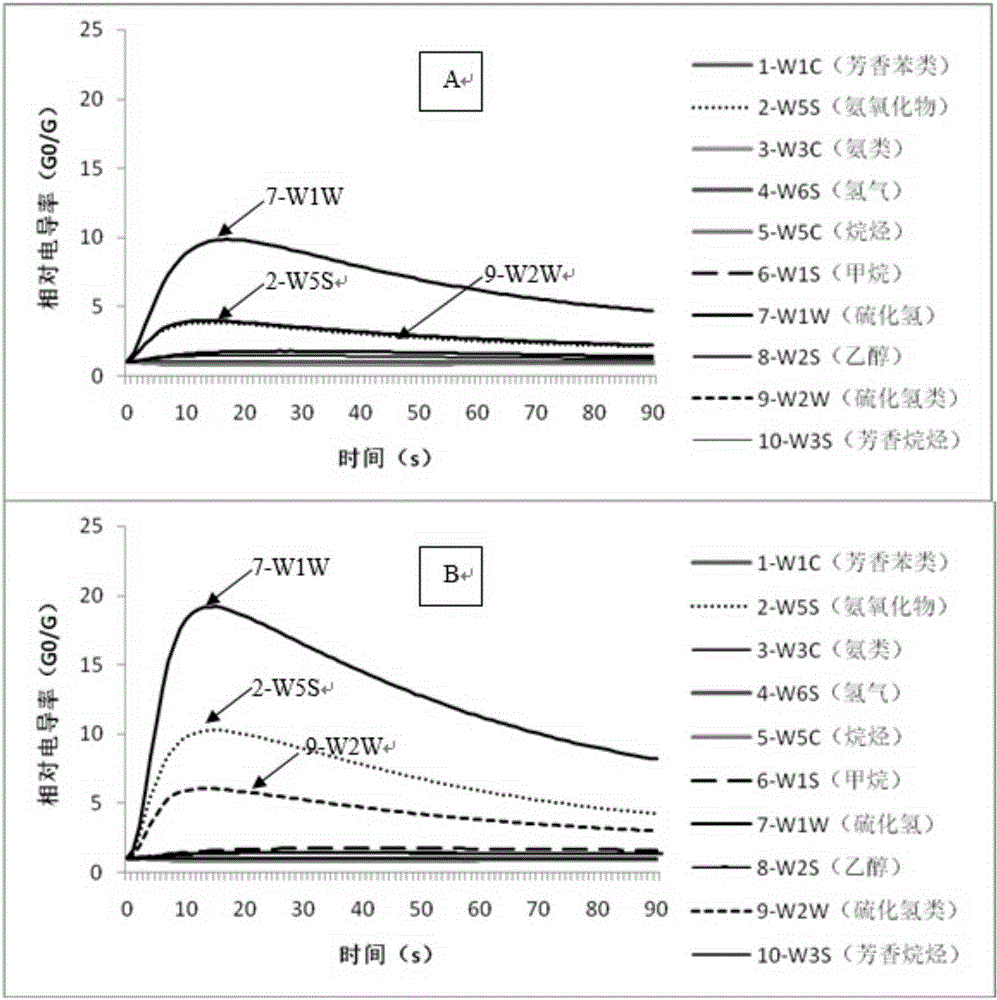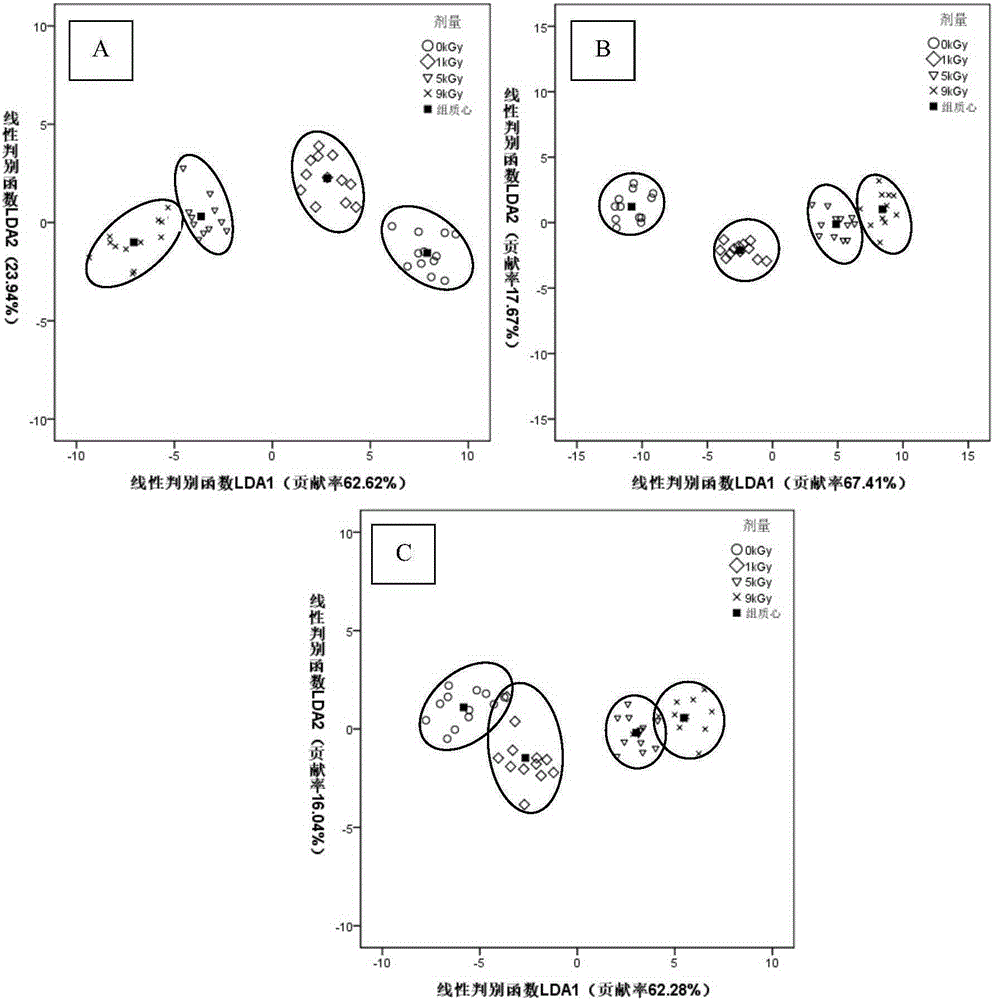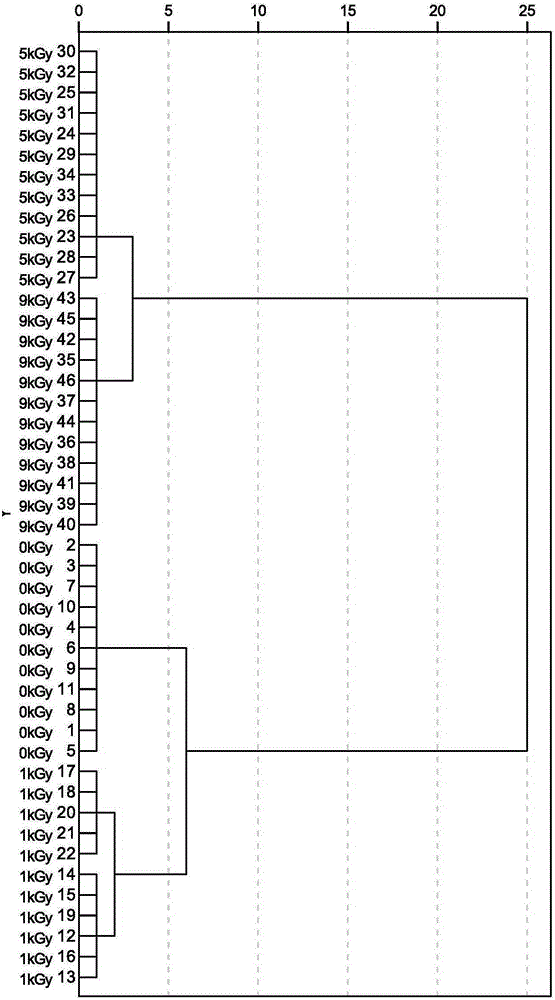Method for rapidly identifying irradiation absorbed dose of tea by using electronic nose
A technology of absorbed dose and electronic nose, applied in the direction of material resistance, etc., can solve the problems of complex processing, inability to distinguish manually by gas chromatography, high price, etc., and achieve the effect of simple processing, fast and efficient detection
- Summary
- Abstract
- Description
- Claims
- Application Information
AI Technical Summary
Problems solved by technology
Method used
Image
Examples
Embodiment 1
[0028] A method to identify the radiation absorbed dose of Keemun black tea using PEN3 electronic nose.
[0029] 1. Irradiate tea samples with known different absorbed doses;
[0030] use 60 Co gamma ray irradiation treatment of Keemun black tea. The absorbed absorbed dose of irradiation is 0kGy, 1kGy, 5kGy, 9kGy.
[0031] 2. Use the electronic nose to sequentially detect Keemun black tea samples with known radiation absorption doses, and convert the odor signal into electrical signal data;
[0032] Identification method: Take 2.0g Keemun black tea samples that have been irradiated with different absorbed doses and then dry, and put them into the headspace sample bottle of the PEN3 portable electronic nose:
[0033] Detection conditions: sample temperature: 25±5°C; headspace: 100-120mL; enrichment time: 25-30min;
[0034] Electronic nose detection parameters: cleaning time is set to 120s, signal acquisition time is 90s, sampling once per second;
[0035] Twelve replicates...
Embodiment 2
[0092] The applicant identified whether Fuzhuan brick tea was irradiated according to the determination and identification method described in Example 1, and the results were as follows:
[0093] 1. Irradiation treatment of tea samples with different absorbed doses;
[0094] use 60 Fuzhuan brick tea was irradiated with Coγ-rays, and the absorbed radiation doses were: 0kGy, 1kGy, 5kGy, 9kGy.
[0095] 2. Electronic nose detection;
[0096] Take 2.0 g of dried Fuzhuan brick tea samples that have been irradiated with different absorbed doses, and put them into the headspace sample bottle of the PEN3 portable electronic nose, and the other steps are the same as step 2 in Example 1.
[0097] 3. Draw the response diagram of the electronic nose to the volatile substances of Fuzhuan brick tea. According to the method in Example 1, the obtained characteristic values A, B, and C are 25s, 45s, and 90s, respectively;
[0098] 4. Extract the characteristic value of the signal of PEN3 p...
Embodiment 3
[0117] The applicant identified whether Huangshan Maofeng was irradiated according to the measurement and identification method described in Example 1, and the results were as follows:
[0118] 1. Irradiation treatment of tea samples with different absorbed doses;
[0119] use 60 Huangshan Maofeng was irradiated with Coγ-rays at concentrations of 0kGy, 1kGy, 3kGy, and 5kGy.
[0120] 2. Electronic nose detection;
[0121] Take 2.0 g of dried Huangshan Maofeng samples that have been irradiated with different absorbed doses, and put them into the headspace sample bottle of the PEN3 portable electronic nose. Others are the same as step 2 in Example 1.
[0122] 3. Draw the response diagram of the electronic nose to the volatile substances of Huangshan Maofeng, according to the method of Example 1, the obtained characteristic values A, B, and C are 25s, 45s, and 90s, respectively;
[0123] 4. Extract the characteristic value of the PEN3 portable electronic nose signal to Huangs...
PUM
 Login to View More
Login to View More Abstract
Description
Claims
Application Information
 Login to View More
Login to View More - R&D
- Intellectual Property
- Life Sciences
- Materials
- Tech Scout
- Unparalleled Data Quality
- Higher Quality Content
- 60% Fewer Hallucinations
Browse by: Latest US Patents, China's latest patents, Technical Efficacy Thesaurus, Application Domain, Technology Topic, Popular Technical Reports.
© 2025 PatSnap. All rights reserved.Legal|Privacy policy|Modern Slavery Act Transparency Statement|Sitemap|About US| Contact US: help@patsnap.com



